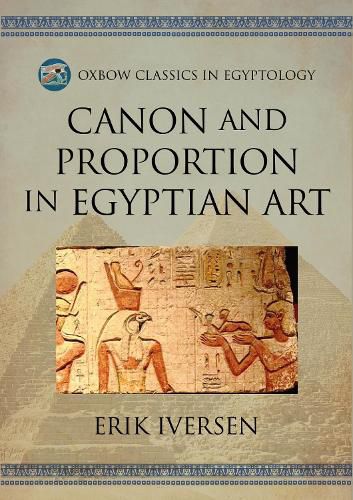Readings Newsletter
Become a Readings Member to make your shopping experience even easier.
Sign in or sign up for free!
You’re not far away from qualifying for FREE standard shipping within Australia
You’ve qualified for FREE standard shipping within Australia
The cart is loading…






This facsimile reissue of the 1975 second edition of Iversen's Canon and Proportion brings back into print a seminal work originally published in 1955. Iversen describes a canon ? that is, a set of rules of proportions ? advanced and used by the artists of Egypt. In order to interpret the stylistic message of the Egyptian system of proportion he undertakes a study of the principles of its construction, an analysis of its modules and presents an unambiguous numerical definition of the ratios governing its units and parts, demonstrating its use with illustrated examples. He contends that much of the art, especially tomb art, was never intended to be seen by mortal eyes and, as such, was designed to follow a set of rules governed by the requirements of religious and cultic traditions rather than purely aesthetic considerations. Painting and sculpture were largely not primarily things of beauty but magical entities fraught with fateful significance. The development and use of a grid for practical application of the system can still be seen in tomb paintings and is demonstrated in the proportional correctness of statues. The system was based on an accurate standardization of the natural relations of the various parts of human anatomy, such as the relation of palm to forearm and forearm to height, expressed in simple numerical terms geometrically reflected in grids based on the fist. Iversen's treatise was not without controversy but this fascinating study remains a hugely important contribution to the interpretation of Egyptian art. AUTHOR: Erik Iversen was an eminent Danish Egyptologist. Born in Copenhagen he was educated at the University of Copenhagen and then studied at Berlin, Oxford and University College London. His particular interests were in Egyptian art and literature and its reception in Europe from classical antiquity through to Romanticism. His publications focused on papyri, philological and lexicographical studies. He died 5 July 2001.
$9.00 standard shipping within Australia
FREE standard shipping within Australia for orders over $100.00
Express & International shipping calculated at checkout
This facsimile reissue of the 1975 second edition of Iversen's Canon and Proportion brings back into print a seminal work originally published in 1955. Iversen describes a canon ? that is, a set of rules of proportions ? advanced and used by the artists of Egypt. In order to interpret the stylistic message of the Egyptian system of proportion he undertakes a study of the principles of its construction, an analysis of its modules and presents an unambiguous numerical definition of the ratios governing its units and parts, demonstrating its use with illustrated examples. He contends that much of the art, especially tomb art, was never intended to be seen by mortal eyes and, as such, was designed to follow a set of rules governed by the requirements of religious and cultic traditions rather than purely aesthetic considerations. Painting and sculpture were largely not primarily things of beauty but magical entities fraught with fateful significance. The development and use of a grid for practical application of the system can still be seen in tomb paintings and is demonstrated in the proportional correctness of statues. The system was based on an accurate standardization of the natural relations of the various parts of human anatomy, such as the relation of palm to forearm and forearm to height, expressed in simple numerical terms geometrically reflected in grids based on the fist. Iversen's treatise was not without controversy but this fascinating study remains a hugely important contribution to the interpretation of Egyptian art. AUTHOR: Erik Iversen was an eminent Danish Egyptologist. Born in Copenhagen he was educated at the University of Copenhagen and then studied at Berlin, Oxford and University College London. His particular interests were in Egyptian art and literature and its reception in Europe from classical antiquity through to Romanticism. His publications focused on papyri, philological and lexicographical studies. He died 5 July 2001.